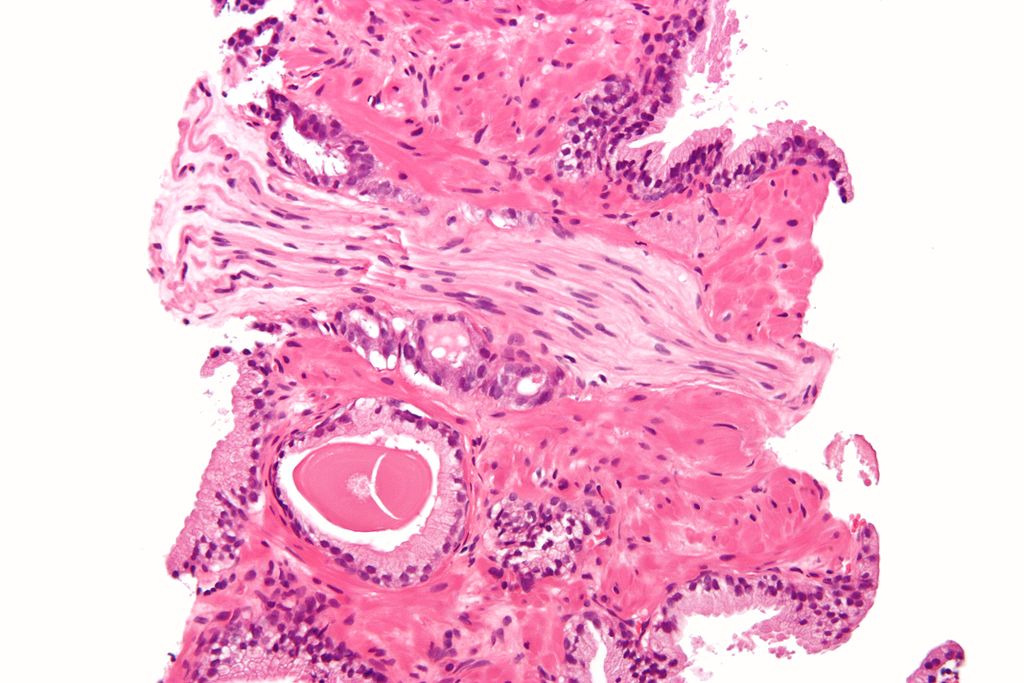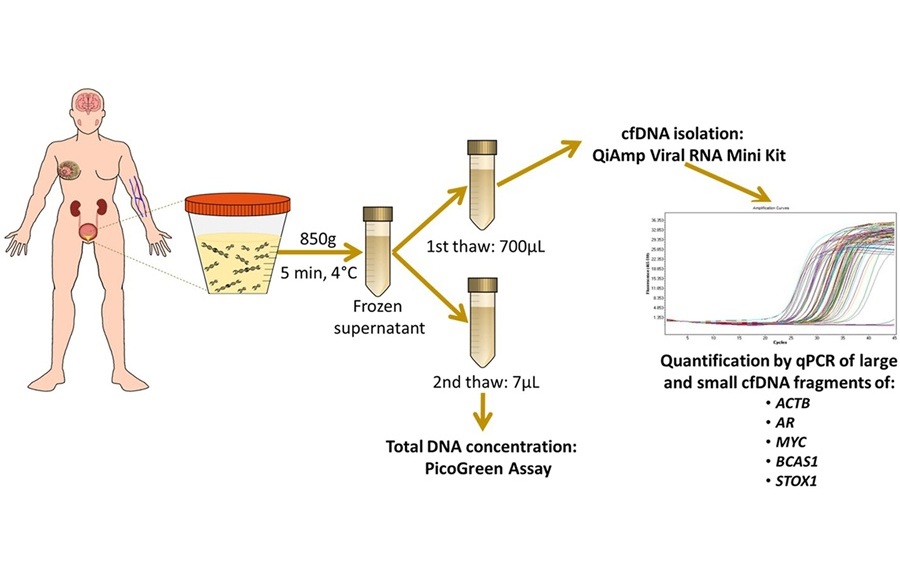Home Urine Collection for More Accurate Prostate Cancer Detection
By LabMedica International staff writers
Posted on 09 Dec 2019
A standardized sampling system enables men being tested for prostate cancer to collect a urine sample at home and mail it to a laboratory for analysis.Posted on 09 Dec 2019
Currently, patient urine samples are collected after a digital rectal examination (DRE) of the prostate, which was thought necessary to boost the levels of prostatic secretions in the urine. The creators of the PUR (Prostate Urine Risk) test now report the development of a sampling system that provides indication of prostate cancer risk in urine samples collected at home, eliminating a visit to the clinic and the uncomfortable rectal examination.

Image: Micrograph showing a prostate cancer (conventional adenocarcinoma) with perineural invasion (Photo courtesy of Wikimedia Commons)
The PUR test was established following evaluation of the cell-free expression of 167 genes in urine samples. Investigators at the University of East Anglia (Norwich, United Kingdom) identified a mathematical combination of 35 different genes that could be used to generate four prostate urine risk (PUR) signatures for predicting the probability of normal tissue (PUR-1), D'Amico low-risk (PUR-2), intermediate-risk (PUR-3), and high-risk (PUR-4) prostate cancer. Results revealed that application of PUR provided a net benefit over current clinical practice, since each PUR signature was significantly associated with its corresponding clinical category. Furthermore, PUR-4 status predicted the presence of clinically significant intermediate- or high-risk disease.
The investigators now describe an At Home Collection Kit that allows urine to be collected by patients at home and then posted to a laboratory for analysis by PUR methodology. The collection tubes contained a commercial preservative, which allowed samples to be maintained at room temperature without loss of RNA quality. A group of 14 participants were provided with an At Home Collection Kit, and instructions. Results of their home urine samples, taken first thing in the morning were compared to samples collected after a digital rectal examination.
At the laboratory, harvest of cell-free RNA using a novel high-volume vacuum extraction method increased total RNA yields, improved the detection sensitivity of prostate-cancer-specific transcripts by RT-PCR, and enabled extraction of RNA from historic frozen urine samples. Thus, RNA yields and quality were comparable to those for post digital rectal examination urine.
The investigators suggested that this method also has the potential to be adapted for the development of home-collection tests for bladder or kidney cancer.
Senior author Dr Jeremy Clark, a senior researcher at the University of East Anglia, said, "Prostate cancer is the most common cancer in men in the United Kingdom. It usually develops slowly and the majority of cancers will not require treatment in a man's lifetime. However, doctors struggle to predict which tumors will become aggressive, making it hard to decide on treatment for many men. The most commonly used tests for prostate cancer include blood tests, a physical examination known as a digital rectal examination (DRE), an MRI scan or a biopsy. We developed the PUR test, which looks at gene expression in urine samples and provides vital information about whether a cancer is aggressive or “low risk”. Because the prostate is constantly secreting, the collection of urine from men's first urination of the day means that the biomarker levels from the prostate are much higher and more consistent, so this is a great improvement. Being able to simply provide a urine sample at home and post a sample off for analysis could really revolutionize diagnosis. It means that men would not have to undergo a digital rectal examination, so it would be much less stressful and should result in a lot more patients being tested."
The At Home Collection Kit for prostate urinalysis was described in the November 29, 2019, online edition of the journal BioTechniques.
Related Links:
University of East Anglia














